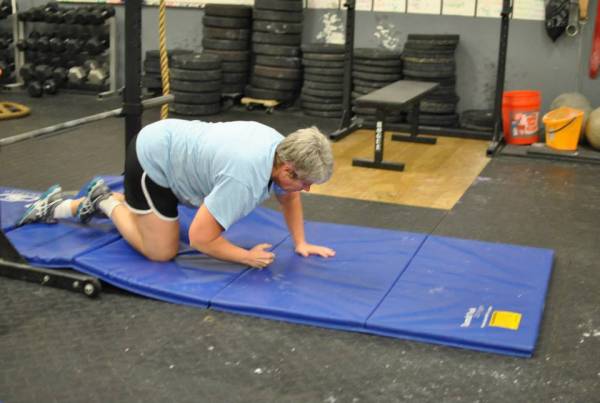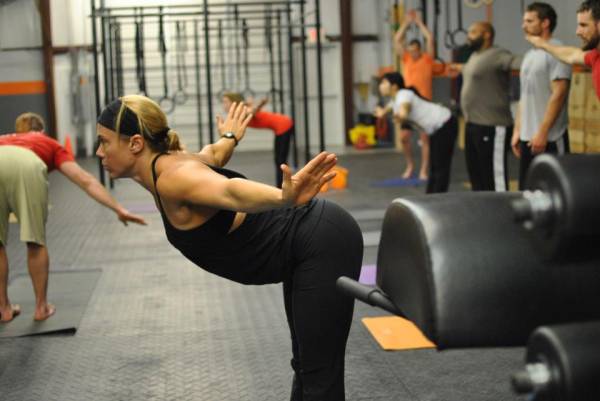Like at the start of any new year, at my gym we have had a few new faces turn up at our door looking for help getting into shape.
Over the years my business has changed from having a majority of clients who were active athletes to more and more people essentially starting on the journey of getting in shape at forty.
Like at the start of any new year, at my gym we have had a few new faces turn up at our door looking for help getting into shape.
Over the years my business has changed from having a majority of clients who were active athletes to more and more people essentially starting on the journey of getting in shape at forty.
Back when I first started lifting weights things were simple – you went to a newsagent, bought a couple of bodybuilding magazines, and copied some routines from inside them.
Along the way I learned about things like super sets, drop sets, what the major muscle groups were, and which lifts hit which muscles. So when I first started on the path to becoming a trainer, I already had about ten years of solid lifting experience behind me.
You’d think that with the amount of information available on the Internet that it would actually be easier to figure all this out now, but the huge amount of training-related content actually makes learning harder than ever before.
One expert says squat like this, another says squat like that. One guy says use kettlebells first, another says master bodyweight exercise before worrying about extra loads. And this is before we even get into diet, which is possibly the most confusing thing about trying to get in shape.
So if you’re just starting out, this is for you. What I hope to provide in this series is a logical plan to get you from either not having been in a gym for years, or from not having ever trained in your life, to safely on the path towards greater health and fitness.
The First Thing to Know
The first thing you need to know is that you’re not going to go from couch potato to CrossFit champion overnight. Probably not even in a year. This journey you’ve started is one of skill acquisition.
Every time you go and workout you are practicing the skills of someone who is already in shape. You are training not just muscles, but habits – exercising your discipline, determination, and willpower daily.
But just as those parts of us need training, so do the physical skills. Many people when they begin training cannot do push ups, pull ups, squat correctly, or even attempt any of the far more complicated things like handstands, pistol squats, or the Olympic lifts.
And that’s fine, because we all have to start somewhere. Just think of working out in the same way you’d think of learning the piano. Before you’re ready for a recital, you need to learn the notes, then you’ll need to learn the music, and finally you’ll need to know how and when to break from that mold to enhance your practice of music.
My friend Ido Portal calls this the path to mastery – isolate, integrate, and improvise. Right now, we need to isolate.
Step #1: Movement
The start of our journey begins with movement. I know you want to go lift weights, get sweaty, and see if you can show those youngsters a thing or two, but trust me when I say that movement is more important than performance right now.
In fact, trying to perform at a high level right now may see you hurt and falling right back off the exercise wagon.

There are so many good resources for mobility that I’ll just list some. Pick one approach and do it daily. It’s that simple. Don’t mistake simple for not important though. Movement is the foundation of high performance.
Gray Cook says that in order to be athletes, first we must be athletic.
In other words, when you can move well, you’ll be able to do many things. And when it comes time to lift weights, would you rather develop strength over a tiny, limited range of the movement or over the full range?
Because load decreases range of motion, so if you don’t have much range to begin with you certainly won’t any longer once you put a decent load on the bar. (That or you’ll suddenly have far too much range and you’ll end up hurt.)
Here are my favorite mobility resources:
- Super Joints by Pavel Tsatsouline
- Intu-Flow ;from Scott Sonnon
- Primal Move
Step #2: Flexibility
The next part of this journey is that you also need flexibility. This is one of many arguments you may see people lose their minds over on the Internet, so I will set this straight.
First, mobility and flexibility are two distinct animals.
Mobility is the range of movement a joint has, while flexibility is the length a muscle can achieve before it senses danger and stiffens itself up to protect you.
Stiffness, in the sense that you feel, is the body trying to keep you safe and to stop you from moving out of the comfort zone you’ve developed over the years.
I hate to break it to you, but adult stretching is painful. In fact, it’s probably the most painful thing you can do in terms of training, as you have to overcome your entire life’s worth of sitting and not stretching.
People will tell you that you should avoid static stretching and what you should be doing is a dynamic warm up and some foam rolling. I’ll quote Ido again when he said, “Nobody ever foam rolled their way to the splits.”
History leaves clues, and in this case, if you look at the flexibility of dancers, gymnasts, and martial artists (as well as great lifters like Klokov) you can see a lot of stretching of various types in their regimens.
The message is clear: the people who move the best also stretch the most.
My favorite flexibility resources are:
- Relax into Stretch by Pavel Tsatsouline
- Flexible Steel by Jon Engum
- Stretching Scientifically by Thomas Kurz
- Body Flow and Body Restored from the Body Practice by Steve Atlas
Your New Goal
Your beginning goal is simple: find a joint mobility system you like and begin doing it daily. You need to do your age in reps for each movement.

I know that is a lot more than the five to ten you are used to doing, but older joints need more lubricant and TLC, just like an old car needs more oil.
You can break this practice into multiple chunks during the day. In fact, it will be better if you do, as you’ll get to the end of the day feeling far better than you are used to.
That’s an important part of this process – when you feel good you’ll want to move more. When you’re stiff and sore, movement won’t be so appealing. So your immediate job is to get the body moving and help it discover movement again, gently encouraging it to move further and further.
The second part of your new goal is to begin stretching. Like with the mobility work, find a system you like and start doing it daily. Stretching gains can come quickly, just like other forms of fitness – if you put the effort in.
If you can’t touch your toes, squat well, or raise your arms directly overhead while keeping them straight, then you are going to need to spend some time. Charles Poliquin says that you’ll need an hour a day for six weeks straight to see noticeable improvement.
But that’s okay, too. Remember how we said this was going to be a long journey? Six weeks now in order to have better function for the rest of your life will seem like a drop in the ocean compared to the next forty years.
Quality of movement trumps everything else. I know you’re itching to go hard and lift some serious weight, but spending time working on movement quality now will pay big dividends later on.
Photos courtesy of CrossFit Impulse.






